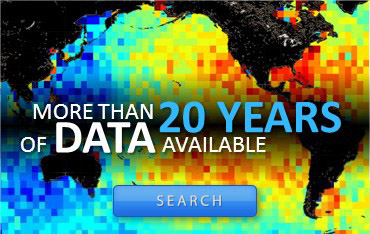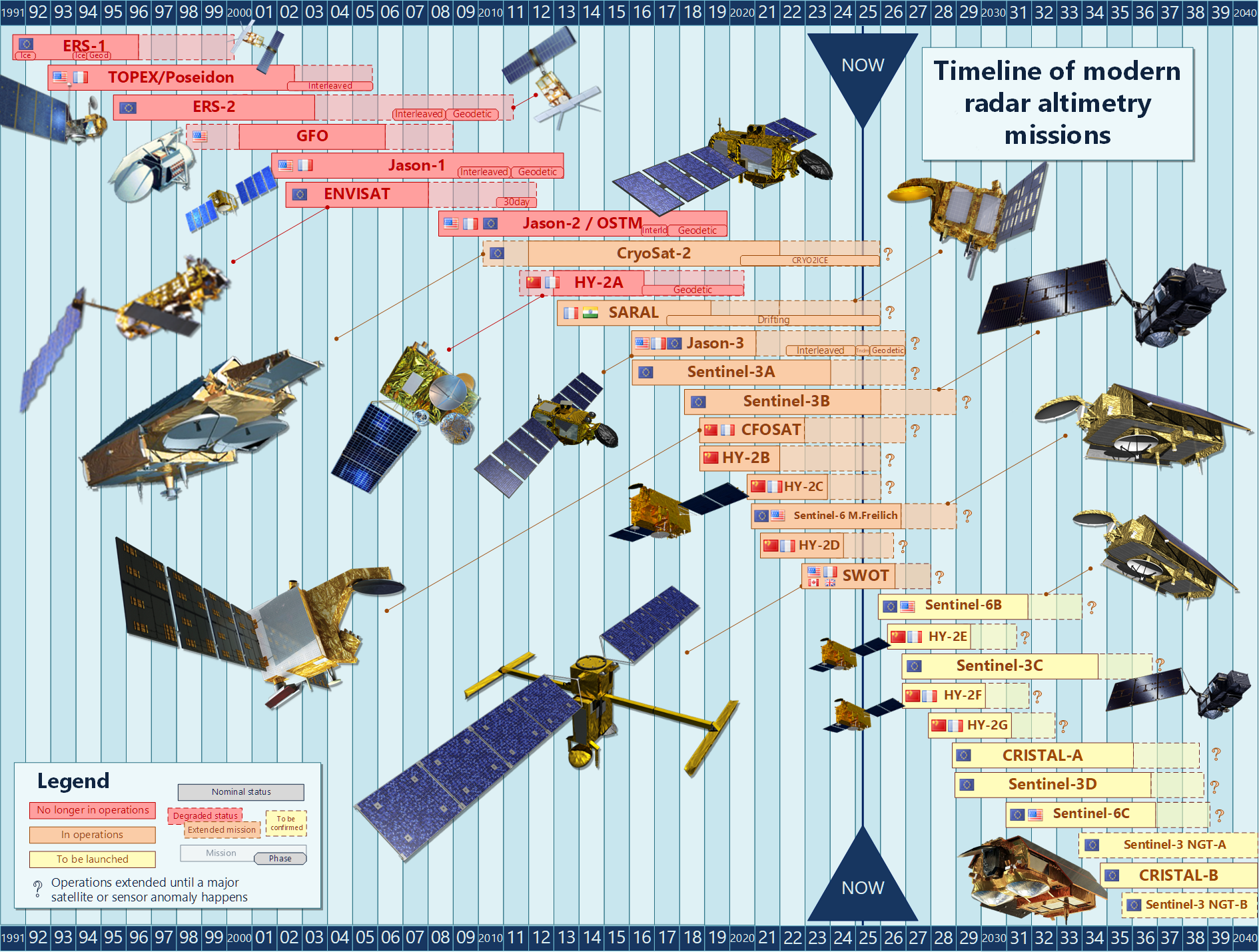2012 Images of the Month
-
Dec. 2012: Winds and currents around India
India has a climate much influenced by the ocean. The knowledge of currents is thus of foremost importance for the whole country. Using the full twenty-years time series of altimeter data enables to correlate winds and currents with a great confidence.
- Nov. 2012: Arctic trends
- Oct. 2012: Accelerated eddy shedding
-
Sep. 2012: Getting smaller details
The merging of multiple altimeter missions improves the resolution of altimetry-derived maps. However, in some regions like the Mediterranean, even more processing, and inclusion of other kind of data are needed to reach enough resolution.
-
Aug. 2012: Altimetry, 20 years and still growing
In 20 years since Topex/Poseidon launch, altimetry has grown, and is still growing, in the number of uses as well as users
-
Jul. 2012: North Atlantic Subpolar front shifts
The way that currents' main fronts shift is one of the information brought by multi-year datasets. With now nearly 20 years of altimetry, such shifts begin to emerge and be more and more studied, correlated with other variations, either (or both) in the ocean or the atmosphere.
-
Jun. 2012: Antarctica thinning seen by Envisat
Antarctica glaciers are moving and react differently depending on the geographical area. In West Antarctica, glaciers are thinning, losing up to several meters a year and this thinning is accelerating. In East Antarctica, some glaciers are losing thickness, but without any observable acceleration.
-
May 2012: Jellyfish on the move
Jellyfish are carried by ocean currents. Altimetry enables to describe those and, with coastal processing, to help forecast jellyfish strandings on the Mediterranean beaches.
-
Apr. 2012: Phenomenal seas
The highest significant wave height ever measured by an altimeter was in the North Atlantic during the Quirin storm. Comparison with other source of data corroborate the altimetric estimates, even if those are higher than the values usually considered as valid.
-
Mar. 2012: Following Kuroshio paths
Kuroshio is one of the major currents. With 20 years of continuous data, altimetry enable to catch year-to-year variation in the path of a current, and to better understand its mechanisms. Understanding, monitoring and forecasting its changing path is important for climate predictions
-
Feb. 2012: Up North
Comparison of altimetry data with in situ measurements in the north polar seas demonstrates that altimetry products can be used to study oceanic variability in the region.
-
Jan. 2012: Tsunami debris on the Pacific
March 2011 tsunami that hit Japan rejected a huge quantity of debris in the Pacific. Monitoring and forecasting those, using in particular altimetry, is becoming vital.
News
 Archives .
Archives . Aviso Newsletter .
Aviso Newsletter .- Search.
- Front-page news.
 Image of the month .
Image of the month . 2025 .
2025 . 2024 .
2024 . 2023 .
2023 . 2022 .
2022 . 2021 .
2021 . 2020 .
2020 . 2019 .
2019 . 2018 .
2018 . 2017 .
2017 . 2016 .
2016 . 2015 .
2015 . 2014 .
2014 . 2013 .
2013 .- 2012.
- Dec. 2012: Winds and currents around India.
- Nov. 2012: Arctic trends.
- Oct. 2012: Accelerated eddy shedding.
- Sep. 2012: Getting smaller details.
- Aug. 2012: Altimetry, 20 years and still growing.
- Jul. 2012: North Atlantic Subpolar front shifts .
- Jun. 2012: Antarctica thinning seen by Envisat.
- May 2012: Jellyfish on the move.
- Apr. 2012: Phenomenal seas.
- Mar. 2012: Following Kuroshio paths.
- Feb. 2012: Up North.
- Jan. 2012: Tsunami debris on the Pacific.
 2011 .
2011 . 2010 .
2010 . 2009 .
2009 . 2008 .
2008 . 2007 .
2007 . 2006 .
2006 . 2005 .
2005 . 2004 .
2004 . 2003 .
2003 . 2002 .
2002 . 2001 .
2001 . 2000 .
2000 . 1999 .
1999 . 1998 .
1998 .
 Operational news and status .
Operational news and status .

















